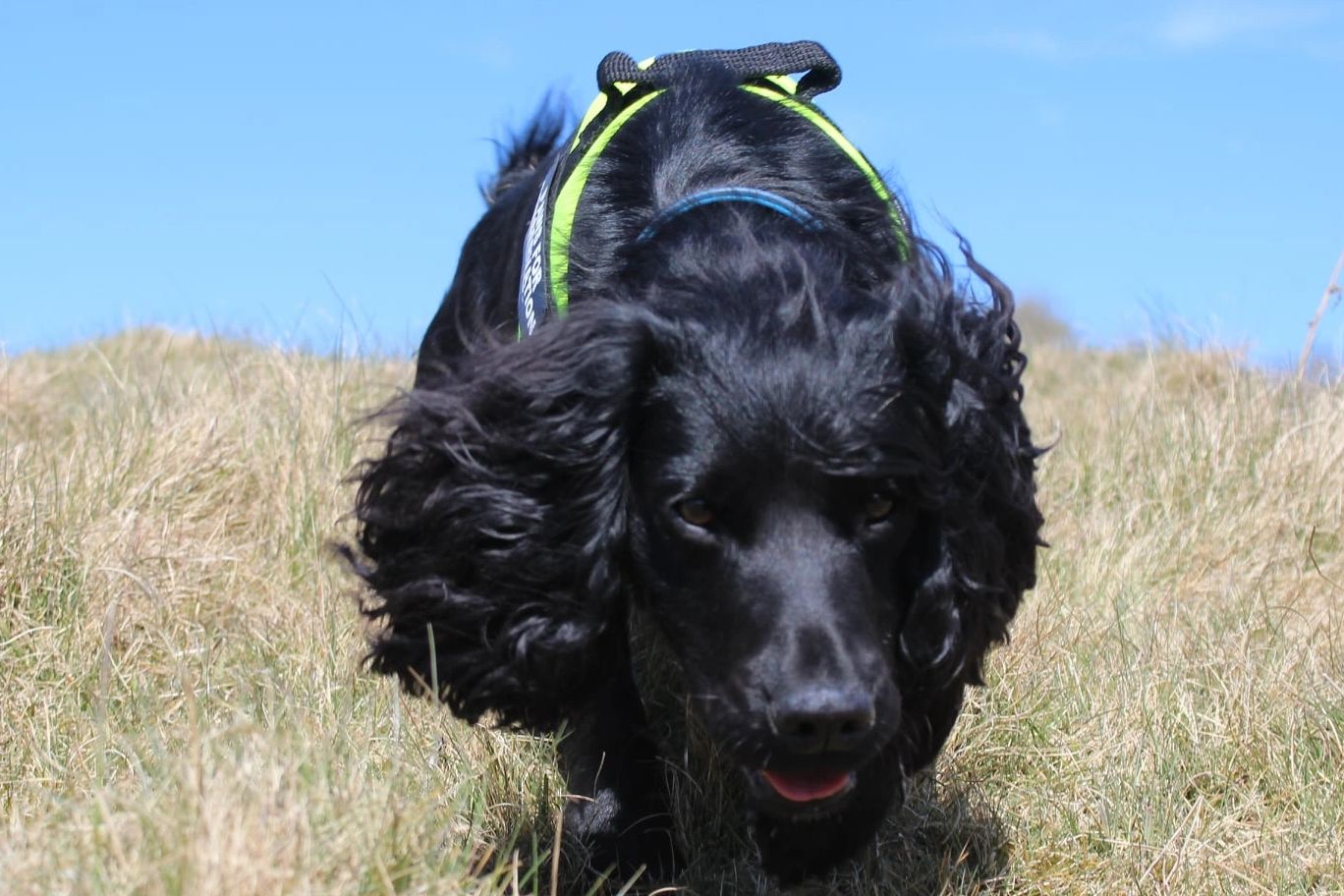
Why use dogs
Bat and bird carcass surveys
Proven to be more efficient than human search teams
In research papers and studies involving bat carcass efficiency searches, human search teams generally located between 20% - 30% of carcasses compared to a minimum of 80% and upwards for dogs.
Non - invasive
Dogs can search difficult vegetation with minimal disturbance to the surrounding wildlife and habitat compared to their human counterparts.
Cost effective
Dogs are fast, agile and accurate. They can generally cover an area of 100 square metres in less than 45 minutes depending on vegetation. It would take a human search team double that time at least!
Reliable
They are precise, unbiased, efficient and not influenced by weather conditions in the same way humans are. The results speak for themselves.

Conservation dog Harley indicating on a bat carcass in thick/thistle vegetation
Paws for Conservation dog teams are currently proven at 98% efficiency for 2024 when carrying out bat and bird carcass searches.
"A dog's nose is hundreds of thousands of times more sensitive than that of a human.
They also do not discriminate or assume, therefore creating an incredible, non-biased, detection machine.
Dogs cover the ground quickly and efficiently, can search areas that might be tricky for humans, thus saving time.... and time is money!
Dogs consistently out-perform human-only search teams when it comes to certain wildlife searches."

Max - bat carcass dog indicating on a buried bat
A few examples of our bat carcass finds










How Great crested newt detection dogs can help you
Great Crested Newts (GCN) are a strictly protected species under British and European law. It is a criminal offence to - kill, injure, capture, disturb, damage or destroy their habitat.
Great crested newts are often perceived as a significant challenge and a 'nightmare' for many construction projects, this is primarily because their presence can lead to delays and increased costs. Current methods used for relocating newts are time consuming, restricted to certain seasons, costly and can be greatly affected by weather conditions.
How dogs can become a developers best friend....
Hiring a Great Crested Newt (GCN) detection dog team can significantly accelerate the process, resulting in time and cost savings.
Here's how:
- Detection During Winter: Dogs have the capability to detect GCN presence or absence during the winter months when the newts are hibernating and cannot be disturbed. This is especially beneficial for sites where the risks are low, but work cannot proceed due to the inability to confirm GCN presence or likely absence. Though its important to note that winter detection does have far more limitations and may not be advised, these will be discussed at first contact.
- Trapping stages: Dogs can speed up the trapping process alongside traditional methods by guiding hand searches to areas where GCNs are present or have been active recently. This is particularly beneficial in vast areas, on large sites, or locations that are challenging for humans to navigate.
- Destruction stages: Prior to any destruction activities, dog teams can conduct a final check of the area to ensure no GCNs remain, providing clients with full confidence that they are complying with legal regulations.
To summarise - Dogs can cover areas quickly, with precision and efficiency. They are non-invasive and can locate GCNs during seasons when human detection methods are ineffective, making them invaluable assets for construction projects. Additionally, their utilisation can enhance positive public perception of the project!
It is important to note that the dog searches are intended to be used alongside current GCN survey methods and not to replace them. The combination of both search methods will speed up the process therefore saving time and money.
Get in Touch
Questions about our Great crested newt detection dogs? Email us at rachael@pawsforconservation.co.uk
Copyright © 2025 Paws For Conservation Ltd - All Rights Reserved.
